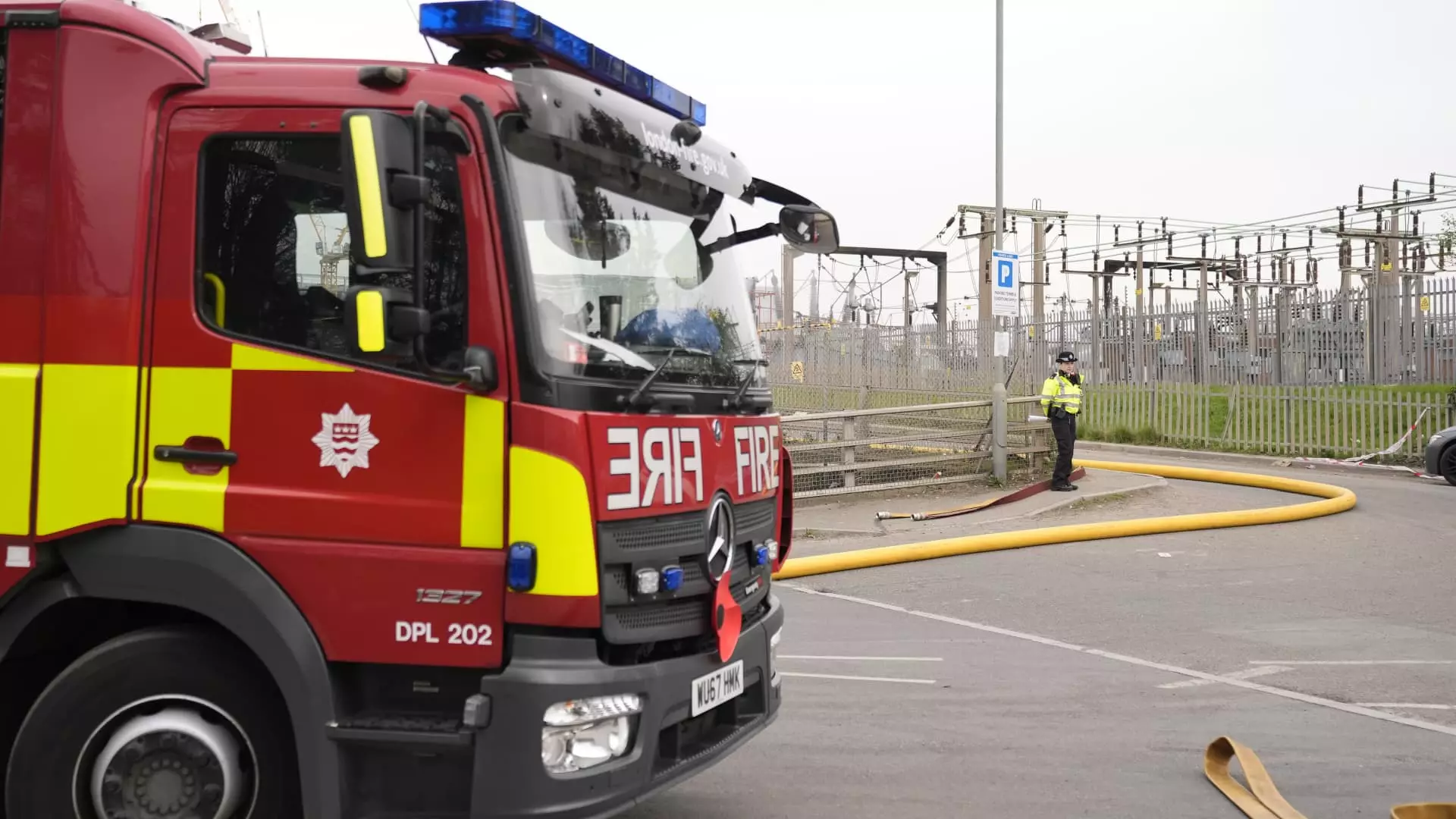The recent closure of London’s Heathrow Airport due to a fire at a nearby electricity substation has laid bare the shocking fragility of our modern aviation infrastructure. Anita Mendiratta, a travel industry expert, has pointed out that the aviation sector is expanding at an unprecedented pace, yet the supportive infrastructure does not match this growth. The implications of such a disparity are troubling. It doesn’t take a crystal ball to foresee that as travel demands rise, so too does the likelihood of catastrophic failures, particularly in energy supply systems that airports rely upon. The Heathrow fire is not just a local incident; it signals the urgent need for an overhaul in how we look at aviation infrastructure around the globe.
The notion that a major airport like Heathrow could be brought to a standstill due to a singular point of failure—a power outage—raises immediate red flags. We live in an age where technology and efficiency reign supreme, yet safety mechanisms seem to lag behind. For an industry responsible for transporting millions of passengers and countless tons of cargo daily, this scenario is nothing short of a crisis waiting to happen.
A Wake-Up Call for Crisis Readiness
The incidents at Heathrow come at a time when air travel is booming, with passenger numbers surpassing pre-pandemic levels as early as 2024. The International Air Transport Association (IATA) forecasts a staggering growth rate of approximately 3.8% per year until 2043. But what happens when such rapid growth meets critical infrastructural weaknesses? The Heathrow incident serves as a wake-up call, revealing how unprepared the aviation sector might be for inevitable crises—whether they arise from energy disruptions, severe weather, or geopolitical tensions.
While Mendiratta dodges around the heavier implications of this event, it is apparent that the fallout from this negligence will be felt for years, echoing through investment strategies and customer trust. How do we expect passengers to feel secure at an airport that can succumb to a common electrical fire? The real challenge lies in changing the culture of risk management in aviation.
Ripple Effects Beyond Cancellation Crises
It’s easy to focus on the immediate inconvenience of flight cancellations, yet this incident’s ripple effects are much broader. Over 4,000 tons of cargo pass through Heathrow daily, a lifeline for numerous businesses and economies. When aviation is disrupted, it doesn’t just affect travelers; it affects supply chains, trade, and financial stability on a much larger scale. The complexities of modern logistics mean that one link in the chain can lead to catastrophic down-stream effects, yet the focus often remains narrowly on passenger inconvenience.
Moreover, the fire’s timing could not be worse, as airlines grapple with rising operational costs and the need to improve customer service in a competitive landscape. Mendiratta’s assertion that customer retention will hinge on how airlines manage their crisis response couldn’t be more critical. This is an existential moment for airlines—how they exhibit responsiveness and care may dictate their long-term viability.
Policy Imperatives: The Case for Robust Infrastructure
The growing chorus for a third runway at Heathrow underscores a troubling reality: our aviation system needs more than just expansion; it needs a comprehensive and strategic reassessment of its infrastructure. UK Finance Minister Rachel Reeves highlights the need for better facilities, but this should extend beyond mere accommodation of more flights. Policymakers must also focus on enhancing the resilience of energy systems, ensuring that energy infrastructures can withstand unforeseen events. The reliance on a single energy source makes Heathrow a glaring example of poor planning.
What good is increased capacity if the foundational components can lead to operational paralysis? This scenario calls for an urgent discourse on the best practices in crisis management and infrastructure investment. Now is the time for a dialogue about integrating green technologies that go beyond merely addressing environmental concerns; they must also bolster the robustness of our critical logistical frameworks.
Investor Concerns in the Post-Crisis Landscape
Investors are acutely aware of the implications that crises like the one at Heathrow can have on short-term operations and long-term sustainability. Food, beverage, and accommodation expenses incurred due to cancellations could elevate operational costs significantly, pressuring airline finances even further. The analytical perspective that Mendiratta introduces is vital; it places emphasis on how airlines respond to emergencies.
More than just a test of service responsiveness, this will be a significant benchmark for investors assessing the health of airline companies. In an age where consumer trust can make or break a brand, how an airline approaches crisis management stands to have profound financial consequences. They can’t just dismiss it as an “outside the airline’s control” scenario; the long-term ramifications will ripple throughout the industry.
The Heathrow incident encapsulates a moment of reflection where the aviation industry must confront its vulnerabilities. If we fail to learn from these painful lessons, we do so at our own peril. The question remains: will the industry rise to the challenge or remain ensnared by its own outdated infrastructure?


Leave a Reply